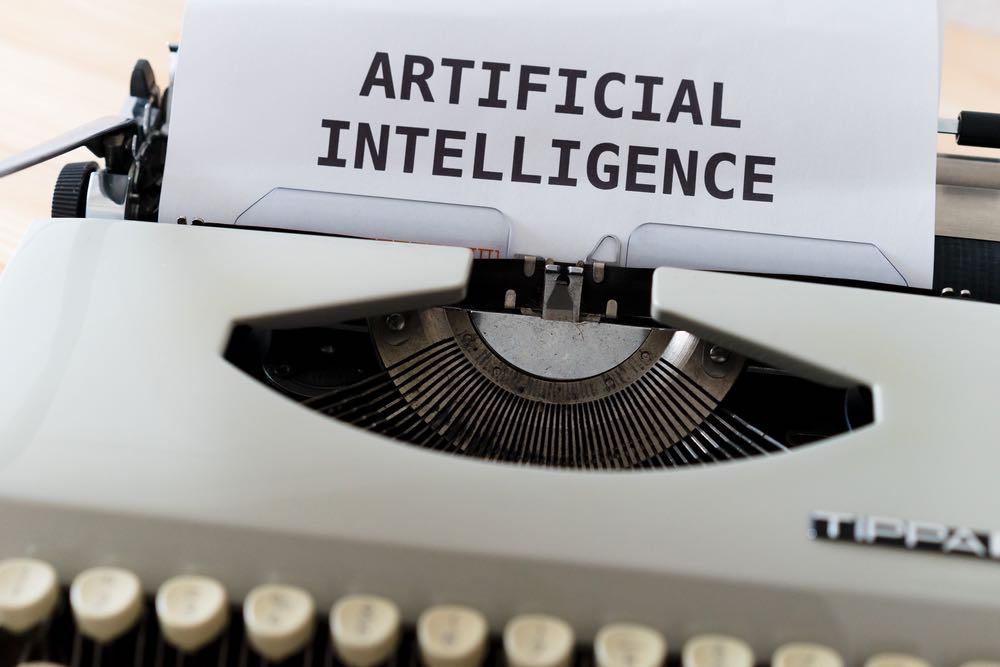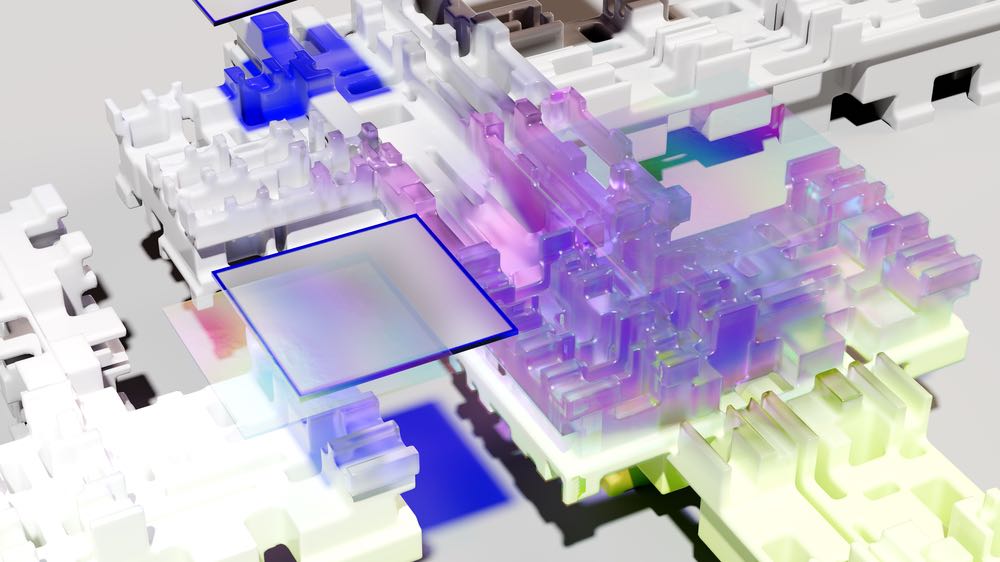Advancements in the Artificial Intelligence space are happening so fast in 2023 that it’s hard to keep up, even for a technology company! In the fascinating landscape of technological evolution, the future of AI and AGI (Artificial General Intelligence) is one of the most exciting prospects.
Editor’s Note [02.10.23]: Today’s update to the original 21st June article revisits our on the future of AI, focusing on the theory that Artificial General Intelligence (AGI) has already been developed internally at OpenAI. This theory has been sparked by mysterious claims from Jimmy Apples, who’s had a track record of accurate predictions about OpenAI and ChatGPT, all of which have been eerily accurate and have sparked a wave of investigations and speculations online. The speculation suggests OpenAI is delaying the public release of this groundbreaking GPT-5 AGI advancement. The news came to us shortly after Jimmy Apples abruptly deleted his Twitter and Reddit accounts, leading many to believe he may have revealed too much and prompted his sudden disappearance from social media. Read on as we continue to explore what is AGI, its implications, and learn more about the current capabilities of ChatGPT-4 through web browsing, plugins and Advanced Data Analysis (previously Code Interpreter).
In this comprehensive guide, we’ll explore AGI, ASI (Artificial Super Intelligence), ANI (Artificial Narrow Intelligence), the prospects of human augmentation, and how far away are we from a truly self-sufficient Artificial General Intelligence.
We’ll delve into intriguing questions such as “What is true AI?” and “What does the future of AI hold”, while exploring the progressive steps from GPT-4 to GPT-5 AGI, and challenging debates like AGI vs AI. Could we witness ChatGPT AGI in the near future? Is AGI possible right now? We’ll also examine the concept of ASI or Artificial Super Intelligence, further fuelling the quest for true AI.
So, let’s jump in and navigate the exciting realm of AI, its future potential, and the unprecedented changes that lie ahead.

Exploring the future of AI, true Artificial Intelligence and AGI. Image by Markus Winkler via unsplash
What is AI (Artificial Intelligence)?
We’ll start with the most fundamental question, “What is AI?”.
AI is a broad term that can be used to describe a set of automated tasks that can be carried out by computer software. These tasks are created and designed by humans, and then completed by the software that has also been coded and designed by humans.
With popular tools such as ChatGPT, we are beginning to see the very start of systems that can adapt and ‘learn’ in order to increase efficiency and accuracy. This is sometimes referred to as Machine Learning.
However, even though we use the word ‘learn’ here, it should be thought of as a different type of learning than what a human is capable of. Learning within this context entails a set of software systems analysing patterns in datasets, and performing changes based on the system’s findings.
There are multiple terms that can be used to describe most of what we have in use today (such as weak AI or ANI). This is what voice assistants fall under in terms of AI categorisation.
What is ANI (Artificial Narrow Intelligence)?
Essentially, Artificial Narrow Intelligence (ANI), or weak AI, refers to the majority of “AI” systems we use today.
This form of AI operates under a limited set of constraints, excelling in single tasks within a pre-defined, narrow area, such as voice recognition, recommendation systems, image recognition, or driving a car. ANI works according to specifically programmed algorithms or learned behaviour from data, but it does not possess consciousness, real understanding, or any kind of autonomous decision-making capability.
ANI systems are capable of “learning” to improve their performance over time, but only within the specific task they’ve been trained on. For example, a chess-playing AI can become increasingly proficient at the game but can’t leverage that knowledge to play a different game like poker.
Despite its limitations, ANI is currently the most widely deployed type of AI, making significant impacts in various industries, including healthcare, finance, and automotive.
Examples include personal voice assistants like Siri or Alexa, spam filters in your email system, customer support chatbots, self-driving cars, and of course ChatGPT, which we will come on to shortly.
What is AGI (Artificial General Intelligence)?
Artificial General Intelligence, also known as strong AI, is something that you will likely start to hear about more in the coming months and years.
AGI is the ‘holy grail’ of artificial intelligence and is considered by most to be ‘true AI’, as this is more in line with what sci-fi movies and novels envision complex AI to become. In fact, it’s a very popular misconception that the AI systems we have in use today are actually AGI.
However, unlike ANI, which is designed and excels at a specific task, AGI systems will be able to learn, think and adapt, and implement knowledge across a broad range of tasks at the same level as a human. They will be able to process incredible amounts of data instantly and display a kind of cognitive flexibility that is the hallmark of human intelligence.
There is no doubt that there will eventually be ethical questions raised in regards to AGI machines in the future, and what rights (if any) they should have.
For example, if AGI machines and systems are able to process information in the same way humans can, does that give these systems the ability to reason and feel emotion? It’s an interesting question to think about in addition to considering the intellectual capability and raw processing potential of such systems.
What about OpenAI and ChatGPT?
Before we continue, it’s important to keep in mind the different types of AI discussed above. It’s easy to get mixed up when thinking about the definitions and actual capabilities of AI and AGI. The rise of ChatGPT is no exception when it comes to this.
Is ChatGPT AGI?
The quick answer is, no.
The popular and remarkable ChatGPT tool has spurred renewed interest in AI and caused a kind of “AI race” between players such as OpenAI with its ChatGPT and Google with Bard. We even have other players in the race such as Meta’s open source LLaMA model.
So, why do people believe ChatGPT is AGI rather than AI (or ANI to be precise)? Well, AGI is described as a form of AI that can learn, plan, solve problems, and come up with creative solutions. This is all true and it’s also true that tools like ChatGPT can accomplish similar tasks. The key difference is that AGI will be able to carry out multiple varied tasks without human intervention. It will be able to act autonomously and perform intellectual tasks that currently only humans can do.
Despite not being AGI, the importance of ChatGPT and its role in AI should not be underplayed. For all of the reasons mentioned above, we recently produced the below article explaining why we believe ChatGPT is an AI inflection point and likely to bring about change that surpasses that of even the internet.
Is GPT-4 AGI?
Again, the short answer is, no.
Although GPT-4 is incredibly impressive, especially with web browsing capabilities and plugins that can perform interesting tasks, it still falls under the definition of ANI and not AGI.
Microsoft’s researchers have recently claimed that such systems are showing ‘sparks of AGI’, but many believe we are still quite a way away from having an AI system that meets the definition of Artificial General Intelligence.
Although GPT-4 has the ability to identify patterns and provide answers with a human-like persona, it is effectively grabbing and piecing together existing content and information on the internet rather than constructing it itself via reasoning and understanding.
That is one of the key differentiators between AI and AGI — the way the information is created and served to the user.
GPT-4 still operates within strictly human-defined parameters.

AGI vs AI: Is ChatGPT and GPT-4 AGI? Image by Google Deepmind via unsplash
What is true AI? The key differences between AI and AGI
Let’s continue to break down these AI definitions and see what sets conventional artificial intelligence apart from AGI (or true AI).
With such a complex subject matter, we thought it would be useful to have a side-by-side view of the key differences between AI and AGI to help differentiate the two visually.
| What are the key differences between AI and AGI | AI (Artificial Intelligence) | AGI (Artificial General Intelligence) |
| Execution of tasks | General AI is great at performing single-purpose tasks. Can sometimes be quite limited. Can be programmed to learn from data, and even adapt. | AGI is similar to how we think of human intelligence. It is capable of understanding and can perform any task a human can in theory. |
| Examples of each | Current examples of AI include Google Bard, Apple’s Siri, Amazon Alexa, ChatGPT. | No current AGI systems currently exist. They are thought to be a number of years away. |
| Versatility | AI typically has a very specific task to accomplish and operates within the confines of a human-defined objective. | Fully adaptable and can learn to improve or become more efficient at tasks. Even finding better ways to do said task. |
| AI learning | General AI uses Machine Learning and training algorithms in order to improve and become better at set tasks. | Can learn and improve becoming more capable and efficient. |
| Human input requirements | AI operates within human-defined constraints, requires oversight, and also additional human inputs in order to serve requests. | AGI can make choices and decisions without the need for human input. |
| Creativity | Can output based on human-defined rules, can identify patterns and output in semi-unique ways. Can be thought of as recycled ‘creativity’. | Capable of human-like creativity and unique ideas. Can process ideas and complex data as effectively, or better than, a human. |
| Understanding | Typically reliant on programming and human instructions. | Can understand nuanced data as well as consider a spectrum of variables. Contextual understanding. |
As you can see, AGI will be a very powerful system with huge potential, but it also poses a huge risk according to many analysts and technology experts.
We can expect the lines to blur in the coming years between AI and AGI as systems become more sophisticated, requiring less and less human intervention and oversight.
Elon Musk has recently sounded the alarm about the dangers of AI, and others have gone as far as to say it could trigger an eventual extinction event.
Even though such concerns are regarded as premature and extreme by some, it’s better to be cautious in these types of areas. A ‘runaway snowball effect’ is easy to envision with intelligent systems that can exponentially improve and iterate in no time at all without the need for human intervention.
It is important to remember that despite the risks, AI and AGI have the potential to do a lot of good. Recently it was announced that scientists have used AI to help discover new antibiotics that help treat superbugs. It is exciting to think about what other breakthroughs can be made possible in the healthcare sector as a result of AI.
No need to worry about the philosophical, societal or economic implications of AGI just yet — we’re still a ways away from having such systems that are fully capable of being thought of as true AGI. For now, the focus is likely to remain on using Chatbot AI tools like ChatGPT to save you time, money, and assist with creative endeavours.
How to get the most out of GPT-4 now with ChatGPT-4, and unlock its full potential
To get the most out of GPT-4, you will need to know how to word and phrase your inputs to get the expected outcome. These inputs are what’s known as prompts and there is a whole field of study around this called prompt engineering. You’ll also need access to ChatGPT-4 through ChatGPT Plus.
Choosing the right prompts can dramatically improve the results you are able to get from ChatGPT-4, saving time, and improving the overall quality.
Here are some incredibly useful examples describing how users are using prompts for ChatGPT-4 currently:
- Plagiarism checking
- Language translation
- Writing assistant (for authors or content creators)
- Brainstorming
- Creative design assistant
- Marketing assistance
- Data analysis
- Code evaluation and writing
- See the full list here – https://github.com/f/awesome-chatgpt-prompts
With the introduction of new use cases, prompts, bots and plugins, the list goes on and GPT-4 is quickly becoming the go-to tool for a wide range of professionals spanning multiple industries and sectors.
We have written a guide on how to use Chat GPT-4 prompts for marketing, which is a good read if you are looking to utilise GPT-4 for any kind of marketing!
It’s important to realise that ChatGPT-4 is more than just a chatbot that can answer prompts. It becomes even more powerful when using web browsing and plugins for accessing real-time results and undertaking specific functions like SEO, financial analysis, and much more.
Web browsing
To unlock the full potential of ChatGPT-4, web browsing capabilities are essential. Imagine the future of AI where ChatGPT-4 can browse the web to gather the latest data and analyse the data with real AGI capabilities to provide actionable insights or automated workflows instantly.
This browse feature is a stepping stone in allowing AI to access real-time information from the internet, making it invaluable for tasks like market research, competitive analysis, news analysis, and fact-checking. Initially made available through ChatGPT-4’s Browse with Bing, native web browsing was temporarily removed. At the time of writing this update, the feature is now available again to ChatGPT Plus users.
ChatGPT-4 plugins
Plugins are another avenue to enhance ChatGPT-4’s capabilities. These add-ons can perform specialised tasks for a massive range of applications. For instance, a plugin could analyse your website’s SEO performance and suggest improvements, or another could assist in creating financial forecasts for your business. Probably one of the most common applications is web browsing, with plugins like BrowserPilot and WebPilot offering an alternative to Browse with Bing.
As the AI landscape evolves, we can expect a surge in the variety and complexity of plugins, making ChatGPT-4 an even more powerful tool for everyday users and professionals across industries.
Advanced Data Analysis (formerly Code Interpreter)
The future of AI is especially exciting when we can see how powerful ChatGPT-4 is in its current form using Advanced Data Analysis (formally Code Interpreter). Imagine a plugin that can not only understand but also write and evaluate programming code. This would be a game-changer for developers, data scientists, and analysts. Well, this is what Code Interpreter could do, and very effectively too. So much so that many developers are already using it to speed up their coding workflows.
Powered by GPT-4, Code Interpreter could do so much more than coding, which is the main reason why it was rebranded to Advanced Data Analysis. With its wide range of Python libraries, ability to upload multiple files, and provide answers based on natural language prompts, there’s not much it can’t do.
For example, some popular use cases right now are:
- Data extraction from PDFs: Read and analyse data from a PDF document.
- Text parsing: Uses Python’s regular expressions (regex) to match and extract details, illustrating its ability to handle complex string manipulations.
- Data aggregation: Correctly aggregating data from a range of different sources and even document types.
- Real-time data analysis: Assist in real-time data analysis, automating repetitive tasks.
- Educational support: Help in learning and teaching programming.
- Debugging: Debug code and handle complex errors.
- Mathematical calculations: Perform complex math operations.
- Data insights: Analyse raw business data and output reports and insights.
- Charts: Create charts and graphs using structured and unstructured data
- Code testing: Run and test code in a sandbox, firewalled environment.
- Natural Language Processing: Coding using natural language, allowing even non-programmers to harness the power of code.
- Code experimentation: A quick and easy way to experiment with code snippets
If the above list wasn’t impressive enough, we’ve recently written about how Screaming Frog’s SEO Spider tool and Advanced Data Analysis can be used to scrape entire websites into Excel form and even convert bulk Excel entries to individual Word documents using ChatGPT-4 to provide detailed recommendations and analysis.
Remember, the key to leveraging these advanced features of ChatGPT-4 is prompt engineering. The better you phrase your prompts, the more accurate and useful the AI’s responses will be. Albeit not AGI, with the right prompts and plugins, ChatGPT-4 is a powerful and indispensable asset for any business.
Artificial intelligence in 2024 — the next 12 months
2023 has been a fantastic year so far for OpenAI with its release of ChatGPT and we believe 2023 will mark the tipping point for AI.
In addition to the success of ChatGPT, OpenAI’s image generator tool called DALL-E has become a huge success too, along with other tools like Midjourney and Stable Diffusion.
Surpassing 1 million users in just 5 days, ChatGPT holds the record for the fastest-growing platform in history. With a platform that grows so fast, a question that inevitably comes to mind is where do we go from here, and what does the future of AI look like 12 months from now?
10 positive predictions
- More revisions of GPT-4 with improved server capacity, increased token counts, faster response times, and general capability improvements.
- New ChatGPT plugins will come onto the scene every day, including plugins for WordPress, AI content creators, and other external platforms using OpenAI’s APIs.
- Further innovations in the open source race for AI and projects like LLaMA becoming more popular.
- Deeper integration between AI, blockchain and cryptocurrencies, with more AI-blockchain applications becoming available.
- Deeper integration between AR, VR and AI and potentially AI capabilities will be announced in future releases of Meta’s new Ray-Ban smart glasses and Apple’s Vision Pro product which is expected to be released in early 2024.
- Greater application of AI within the retail and eCommerce industry, including shopper tracking, AI-led personalisation, and smarter inventory management.
- The battle for search – rivalry between the search engine giants (Google and Microsoft) is likely to heat up as AI plays a more central role through Microsoft’s Bing and Google’s Bard or Magi project.
- Significant change and application of AI within the manufacturing and healthcare sectors.
- More advanced features will be made available through the release of GPT-5, which we believe will be released in 2024.
- AGI will be officially announced in 2025 but possibly sooner.
4 not so positive predictions
Sadly, it’s not all good news. We also predict the following:
- An influx of AI-generated fake content flooding the internet, email, and TV, consequently creating mass confusion over what’s real and what’s not.
- More students turning to AI as a means to write essays, provide answers and cheat the system.
- An increased threat perceived to democracy ahead of upcoming elections around the world.
- Greater regulation and laws being enforced around the use of AI.
It’s widely expected that we see GPT-5 around the end of 2023 or early 2024 but there’s speculation that this will be delayed based on what has been said by the team at OpenAI, which mainly appears to be a response to regulation concerns and requests to delay the development of advanced AI like GPT-4.
Does true AI, AGI or GPT-5 AGI exist anywhere right now?
Artificial General Intelligence (AGI) refers to machines capable of understanding, learning, and applying knowledge across a wide range of tasks, essentially mimicking human cognitive functions. While there are ongoing discussions and developments in the field, companies like Google’s DeepMind are suggesting that AGI could be just a few years away, the question of “what is AGI?” and whether it currently exists is still up for debate. It’s widely believed that GPT-5 AGI will be possible but the mysterious claims by Jimmy Apples have added fuel to this discussion, suggesting that AGI might already be a reality, at least internally at OpenAI.
We also have exciting advanced AI applications being developed like AutoGPT and BabyAGI, which bring us much closer to the idea of AGI.
The enigma of Jimmy Apples
Jimmy Apples has become a focal point in the AGI discussion due to his series of accurate predictions about OpenAI’s projects. His sudden disappearance from social media platforms after sharing an image has only intensified the speculation. Many believe that his actions indicate that AGI has been achieved internally and is being kept under wraps for now. Some believe he is a sort of informant or whistleblower, while others think it could be an elaborate publicity gimmick by OpenAI’s marketing team.
Key events and predictions in “AGI Has Been Achieved Internally? story and Jimmy Apples claims
If you don’t fancy watching this interesting video from @AIAdaExplains, here’s the breakdown:
- September 18: Jimmy Apples tweets “AI has been achieved internally.” The tweet goes largely unnoticed.
- Reddit Investigation: A group of Reddit users familiar with Jimmy’s accurate past predictions about OpenAI decided to investigate further. They find evidence supporting his credibility.
- Viral Attention: After gaining viral attention, Jimmy Apples posts an image that fuels speculation. He then deletes his Twitter and Reddit accounts, leading many to believe he revealed too much.
- March 4 & 14: Jimmy predicts the announcement date for GPT-4, which turns out to be accurate. This defies even specialized prediction platforms.
- April 28: Jimmy predicts a new OpenAI project called GOI. The prediction is confirmed on September 19, 2023.
- September 10: Jimmy tweets about “Chat GPT plus referrals coming soon.” This is later confirmed to be accurate.
- OpenAI Employee Behavior: Reddit users notice unusual tweets from OpenAI employees, adding another layer to the speculation around AGI and GPT-5.
- Other Predictions: Jimmy has made other predictions, such as a 1-2 trillion text model-only version of GPT-4 releasing soon, which also turned out to be accurate.
- Sam Altman’s Involvement: OpenAI CEO Sam Altman breaks his 7-year Reddit silence to vaguely deny the accusations but adds fuel to the fire with cryptic tweets.
- Theories about Jimmy: Various theories emerge about who Jimmy might be, ranging from a scam artist to a legitimate insider at OpenAI.
- Unresolved Questions: Despite the intense scrutiny, the true identity of Jimmy Apples and the veracity of his claims about AGI and GPT-5 remain unresolved.
On the one hand, we can see OpenAI’s Sam Altman discussing AGI as a potential co-worker replacement and claiming on Reddit that “AGI has been achieved internally” but then claims:
“Obviously this is just memeing, y’all have no chill, when AGI is achieved it will not be announced with a Reddit comment.”
– Source: https://www.independent.co.uk
This captivating tale of Jimmy Apples and Sam Altman’s comments raises important questions about the future of AI, the possibility of AGI, and the role of GPT-5 AGI in this unfolding narrative.
For more on this fascinating subject visit our article below on the history and future of OpenAI and the recent announcement of Q* (Q-Star):
Brilliance, Betrayal & Building Tomorrow: The History of OpenAI & Its Future
GPT-5 AGI
GPT-5 has been at the centre of various reports claiming it will achieve AGI status. However, there are also conflicting reports suggesting that OpenAI is not actively working on GPT-5 due to safety concerns. Given the recent speculations and the track record of Jimmy Apples, it seems increasingly likely that GPT-5 may already possess AGI capabilities, although its public release remains a contentious issue.
AutoGPT: A step forward, but not AGI
AutoGPT is described as one of the first examples of GPT-4 running fully autonomously, pushing the boundaries of what is possible with AI. While this is a significant advancement, being autonomous doesn’t necessarily mean it possesses the broad, human-like intelligence that defines AGI.
BabyAGI: Close but not quite
BabyAGI is referred to as an autonomous AGI agent leveraging cutting-edge technologies. Despite these claims, it’s primarily described as an AI-powered task management system, which suggests it’s designed for specific tasks rather than exhibiting broad, human-like intelligence.
While there are significant advancements in the field of AI, definitive evidence for the existence of true AGI or GPT-5 AGI is still lacking. The mysterious actions and predictions by Jimmy Apples have reignited the debate, making the future of AI and the role of GPT-5 in AGI a subject to watch closely.
Artificial intelligence beyond 2024
AI has changed so fast in the last 12 months that it’s hard to imagine what the future of AI will be like in 2025, let alone 5 or 10 years from now.
Will we see stricter regulation and enforcement regarding the applications of AI? Will AI be banned as a result of ethical concerns over increasingly intelligent systems? Things are certainly going to change drastically in the coming years, so let’s cover what we can expect to see initially.
AGI and eventual human augmentation
As surreal as it sounds, we aren’t lightyears away from human-AI augmentation. With the likes of Neuralink – Elon Musk’s brain-interface project – combined with breakthroughs in the AGI space, it won’t be long until we can augment and enhance our cognitive abilities via artificial systems.
Neuralink currently focuses on trying to treat patients that have issues with communication by placing an implant inside, or on, the brain. Early tests have been looking promising and the company has been approved to start human trials recently.
It is easy to imagine a time when Neuralink can be inserted into the skull in order to enhance human capability rather than being used to fix cognitive or communication problems.
More capable robots and AI hardware
We have seen the Japanese robots that exist in some hotels (although they are currently controlled by humans). However, we are starting to see hotels appearing such as Henn na Hotel Asakusabashi where robots and AI play a key role in running the business and serving guests.
I Spent a Night at World’s First Robot Hotel in Tokyo Japan
Despite still being a gimmick with some utility and functionality, we can expect to see a more comprehensive implementation of robots in the coming years where robots are able to operate with complete autonomy.
ASI – What is Artificial Super Intelligence?
If things weren’t confusing enough with terms like ANI and AGI being used to describe AI, we thought we would throw another one out there – ASI (Artificial Super Intelligence).
ASI refers to a level of artificial intelligence that surpasses human intelligence in virtually all economically valuable work. This not only includes intellectual capabilities, but also the potential to exceed human ability in areas of emotional intelligence, decision-making, and creativity.
Essentially, ASI would outperform the best human brains in practically every field, including scientific creativity, general wisdom, and social skills.
In contrast with AGI, which is comparable to human intelligence and can carry out human-level tasks, ASI goes a step further. An ASI system wouldn’t just replicate human decision-making; it would be capable of making decisions that humans haven’t even considered.
Right now, ASI is purely hypothetical and highly speculative. However with the rate of innovation and change taking place currently within the field of AI, we can easily see a future where ASI is possible possibly even not more than 10 years away.
The Future of AI: Conclusion
AI remains a complex subject, with terms like ANI, AGI, ASI, GPT-4, and GPT-5 often causing confusion. Adding to the intrigue, the question of “what is AGI?” becomes even more pertinent. For a simple explanation of what is AI and how does ChatGPT work, please feel free to check out our recent article below which explains this complex subject as a children’s story:
How Does ChatGPT Work in Story Form: The Adventures of ChatGPT “The AI Storyteller”
Regardless of how complex this subject is, the future of AI is certainly very exciting and we can expect change to happen at an unparalleled level over the coming years.
Whilst it feels like we have true AI right now with claims being made that ChatGPT, GPT-4 and tools like AutoGPT and BabyAGI are AGI, this sadly isn’t the case. True AI can only be defined as a system that possesses human-like intelligence and can operate autonomously and across a broad range of tasks, at the same level as a human (AGI) or better than a human (ASI).
From our perspective, it seems very likely that GPT-5 will be capable of AGI. We initially predicted that it probably already is behind the scenes, but when or even whether an AGI version gets released is up for debate. In light of recent speculations, notably from the enigmatic figure Jimmy Apples, the debate around the future of AI and the existence of AGI has intensified. His sudden disappearance from social media after fueling these speculations adds another layer of intrigue to the discussion. Given these developments, it seems increasingly plausible that GPT-5 may already include AGI capabilities internally, although its public release remains uncertain.
The topic of true AI and whether we’ll see AGI unveiled in the coming year(s) (or 2025 as predicted by Jimmy Applies) is a question that policymakers, industry leaders, and governments will likely decide. If it’s not here already, it will be very soon.
What do you think about AI and AGI? Do you have any thoughts about the future of AI? Will it be a force for good or a dangerous threat we should be cautious of? Will we see AGI happen any time soon, or are we many years away with policymakers delaying progress? Please let us know in the comments section below or on social media.

![Seo content creation guide for good content - why good content matters: seo content creation guidelines [updated] Seo content creation guidelines for good content](https://www.opace.co.uk/wp-content/uploads/2024/03/SEO-content-creation-guide-for-good-content-150x150.jpeg)




Do you think that ChatGPT is already AGI?
Not yet, but we can definitely expect it in the coming years.
Chatgpt is a prime example of AI technology that continues to evolve and impact various aspects of our lives.In my opinion, you are right.
Lovely
Claude AI’s engagement on this platform extends to a higher level, offering a deep, meta-awareness of a wide range of subjects. This adds a unique layer of depth to the discussions, elevating the overall intellectual quality of this community.